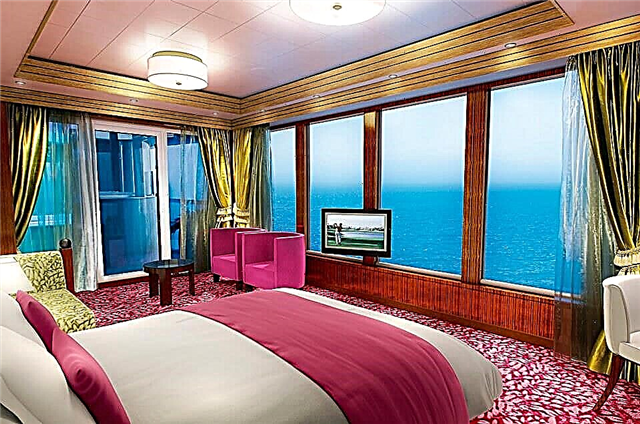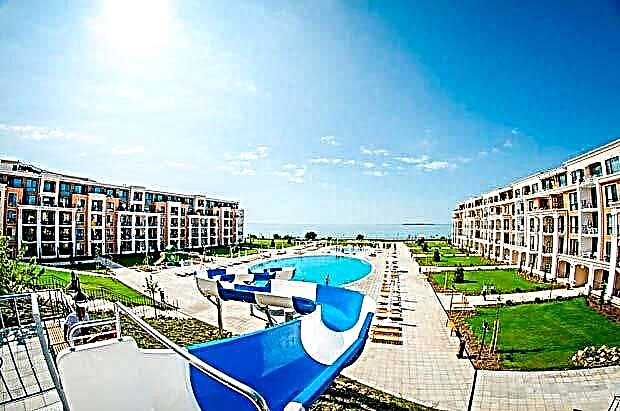Kazan Cathedral, impressive in size, stands south of the Vvedensky Cathedral, not far from the southern gate, through which tourists and pilgrims enter the territory of the Orthodox monastery. It was built at the beginning of the 19th century. Nowadays, the picturesque church is well restored, and believers visit it every day.
Temple history
The temple, dedicated to the icon of Our Lady of Kazan, revered in the Orthodox Church, was founded in 1805, when Abbot Abraham was the abbot of Optina Hermitage. A legend has been preserved in the monastery that at the very beginning of the work on the site where the church was later built, Hieromonk Macarius was badly hurt and fell ill.

Cathedral view from the south gate
During his illness, he had a dream in which the hieromonk saw the house of Elena Semyonovna Saburova, who owned an estate in the village of Frolovskoye, not far from the monastery. In a dream, Macarius prayed in a landlord's house and knelt in front of the image of the Kazan Mother of God.
When he woke up, he felt much better, and the disease receded. Overjoyed, the hieromonk went to Saburova to serve a thanksgiving service in her house. The landowner listened to him and announced that she wanted to build a new church, she was ready to give him a copy of the icon of Our Lady of Kazan kept for him and could help with money for the construction.
The construction of the church took 6 years and was completed in 1811. Saburova's money was not enough for finishing, so Hieromonk Makarii voluntarily went around the neighboring villages until he collected all the necessary funds.

Facade of the cathedral
The new church from the very beginning took an honorable place in the diocese, because the bishop of Kaluga and Borovsky Evlampy himself came to consecrate it. Four years later, the new bishop of the diocese, Eugene, and the rector of the Novospassk monastery, Archimandrite Emvrosy, were invited to consecrate the two side chapels.
The church was reconstructed several times. At a time when the Monk Isaac (Antimonov) was the abbot of the monastery, the church was expanded from the side of the porch. In the spacious annex, a room for the sacristy and choir was equipped, and a utility cellar was made in the lower part.
After the coming of Soviet power, the Orthodox monastery was transformed into an agricultural artel. The Kazan church was closed last. This happened in 1923, and the students of the agricultural school immediately entered the former temple building.

Rear view of the cathedral
A few decades later, only three walls remained from the church, and agricultural machinery stood in its altar. The ruins of the once majestic temple made a depressing impression, and not a trace of its former splendor remained.
In the 1990s, a man's monastery began to revive in Optina Pustyn, and with it the difficult work began to recreate the desecrated and destroyed shrines of the monastery. The Kazan Church was rebuilt and painted. His Holiness Patriarch Alexy II himself participated in the consecration of all three thrones, which took place in 1996.
The architecture of the temple and its interior decoration
The stone temple has a rectangular base and is divided into two floors. The entrance to it is decorated with a picturesque porch and is located on the west side. The pitched roof culminates in a bright blue semi-dome decorated with large gilded stars. Above it rises a high, deaf drum with a gilded onion dome and a large cross.

On three sides, the church building is decorated with classical porticoes with triangular pediments, and from the east it ends with a semicircular temple apse. Behind it begins the territory of the monastery necropolis. The inhabitants, monks and benefactors of the Orthodox monastery found peace here.
There are three thrones in the church. Located in the center is dedicated to the icon of Our Lady of Kazan, the southern one is called the Exaltation of the Cross, and the northern side-altar is consecrated in honor of the Christian saints Fyodor Stratilat and George the Victorious.
The walls and ceilings of the restored church are decorated with picturesque frescoes. All of them were made by the masters of Optina Pustyn and icon painters of the Kaluga region using old techniques of "wet" painting.

Inside the temple, you can see several tombs in which the former abbots of the monastery are buried. The venerable Schema-Archimandrite Moisey (Putilov) and his brother Schema-Abbot Anthony (Putilov) are lying in the church. Nearby are the crypts of Archimandrite Dositheus (Silaev), Schema-Archimandrite Isaak (Antimonov) and Archimandrite Xenophon (Klyukin). Their relics were unearthed in the mid-1990s, and new tombs were built in the old places.
There are neat footpaths and flower beds around the Kazan Church. Therefore, from early spring to autumn cold weather, visitors to the monastery can admire the colorful variety.

Interior of the Church of the Kazan Icon of the Mother of God
The current state of the temple and the visiting regime
Today the Kazan Church is a functioning Orthodox church, where church services are held every day. On weekdays, services begin at 7.00, 9.00, 12.00, 13.00 and 17.00, and on Sundays - at 6.30, 10.00, 12.00 and 17.00.
Attraction rating:











